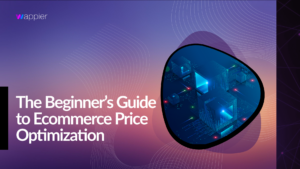Game translation is essential for reaching global audiences, but it’s not as straightforward as you might think.
One of the biggest components of the video game localization process is translation. Video game translations allow publishers to release games in new markets around the world, but this isn’t as straightforward as you might think. It’s not enough to simply translate each line of text and dialogue; the best localizations help players navigate the nuances of different languages and cultures.
When done right, video game translations can turn a project from a niche title into an international phenomenon. But where do you even begin? You can start by asking the right questions.
What are video game translations?
According to Elizabeth Bushouse, a video game translator and author of a Master’s Thesis entitled The Practice and Evolution of Video Game Translation: Expanding the Definition of Translation, “Video game translation combines elements of software, literary, theater, audiovisual translation, and more. Because of this, while the individual aspects included in the process may not be unique to video games, such as subtitling or use of programming code, it is the specific combination of all of these into one product that sets video games apart from other types of translation.”
In other words, video game translations are about language — but they’re also so much more. The interactive nature of video games sets the translation process apart from other mediums, with scripts running hundreds of pages long. And that’s just the dialogue; translators also need to consider factors like written text, difficulty, publisher brand safety, cultural implications, geographical references, and more.
A good game translation could mean the difference between achieving international success and becoming a punchline. Badly translated games are subject to poor reviews, which often correlate with poor sales. That’s why understanding the process of video game translations is critical for publishers who want to increase sales while expanding their reach.
How do video game translations work?
One of the first things game publishers and their translation teams must do is decide what languages make sense for the project. Obviously, publishing in major markets for the games industry is a priority, but not the only factor to take into consideration. Be realistic about how your game could be perceived in other languages and cultures; is it relatable and understandable for people in other regions? Is it built on a technological framework that supports nuances like left-to-right and right-to-left reading and varied character counts?
That’s not to say that translated games should change their settings entirely, but it’s a delicate balance. For example, many games are developed in Japan and later released in Europe and North America, but that doesn’t mean their storylines should be completely westernized. The Shin Megami Tensei: Persona series is especially good at striking that balance; once a niche Japanese RPG series, the franchise has found mainstream success throughout the world.
The Persona games are set in Japan, and that doesn’t change in translation. However, the series makes Japanese culture understandable and accessible. Persona 5, originally released in Japan in 2016 and worldwide the following year, feels like it’s taking the player on a guided tour of Tokyo, rather than dropping them off in unfamiliar territory or changing the setting to London or New York City. “P5 was a monster in terms of localization scope,” translator Yu Namba said in a blog post. “It boasted the most number of translators and editors on a team, and everyone spent countless nights making the English version of P5 a reality.”
He added, “When localizing a Japanese game, there’s always something that simply won’t make sense to the Western audience if translated word for word. Similarly, there may be lines that are too long to fit in the text window or the time allotted in a scene. What to keep, what to cut out, what to change, what are the consequences — it’s always a tough call, and the approach is different for each person. But the process becomes a bit easier to handle when the entire team is on the same page.” These efforts paid off: Persona 5 was popular enough to garner an enhanced rerelease a few years later, and sales of the game 4.6 million units — a significant chunk of the 13 million units of lifetime sales for the series.
On the other hand, rushing through the translation process or taking shortcuts can spell disaster. While worldwide releases are ideal for sales, they rely on translators to work on a game that may be early in the development process. As Bushouse explained, “Translators may have little to no access to the context of what they are translating, as the visuals or other information may not even have been constructed yet. Translators end up having to translate twice the amount of text or more, as the developers rewrite or change scenes.”
One thing that all translators agree on is that you can’t cut corners when it comes to video game translations. Machine learning and free tools might save you money upfront, but they can’t produce the kind of accuracy needed for video game translations — not to mention any cultural sensitivities. Some translations go so poorly that they actually need to be redone, wasting time and money in the long run.α
How can video game translations go wrong?
The problem with good video game translations is that they’re largely invisible. If the copy is clean, the dialogue makes sense, and the cultural references are understandable, players generally aren’t thinking about how the game was translated.
On the other hand, bad game translations are all too easy to find. The Bad Game Translation Hall of Fame, curated by game translator Clyde Mandelin, has dozens of hilarious translations gone wrong, from the classic “All your base are belong to us” to frustrating typos in one of the most beloved games of all time.

Some translation errors are unintentionally hilarious, but still get the point across.

It’s easy to shrug off simple errors and laugh at nonsensical phrases, but bad video game translations can have far worse consequences. Game translation should be handled by pros who understand the nuances of both the language and culture of the intended market, as well as how video games work. Otherwise, you risk publishing something that’s insensitive, offensive, or possibly inappropriate for either your brand or the age range of the intended audience.
Of course, translation is only one piece of the larger localization puzzle. Another piece is monetization, which is critical for generating revenue in a global market — particularly when it comes to mobile games. At wappier, we can help facilitate the localization process with Predictive Econometric Models that analyze a variety of data to determine appropriate in-app purchase pricing on a per-country basis. Want to know more? Get in touch!







